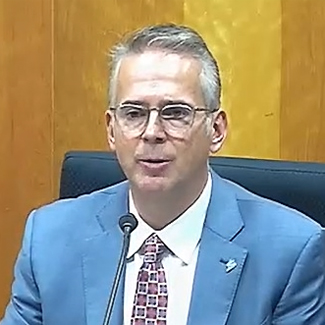
ERCOT has “sufficient” installed capacity to meet a forecast peak demand of 67.4 GW this winter, the ISO said Tuesday.
Based on its latest seasonal assessment of resource adequacy (SARA), the Texas grid operator expects to have about 87.3 GW of winter-rated capacity available during the upcoming cold months. Two thermal resources, a coal unit and a gas-fired unit comprising 685 MW, will be out of service all season, ERCOT said. The SARA report assumes “typical” thermal outages totaling almost 10 GW this winter.
The projected demand is based on average winter conditions for the 2007-2021 winter peaks that would include the devastating winter storm of February 2021, which still raises Texans’ anxiety levels. The SARA report assumes high demand, high thermal outages and low wind output in its various scenarios but not gas supply disruptions, which FERC and NERC said were responsible for most of the generation outages during the 2021 storm. (See FERC, NERC Release Final Texas Storm Report.)
ERCOT’s demand peaked at 77 GW during the 2021 winter storm before the outages became too much to handle. Texas A&M University’s Texas Center for Climate Studies has said demand would have reached 82 GW had there been enough generation to meet demand.
 Pablo Vegas | Admin Monitor
Pablo Vegas | Admin MonitorBut Public Utility Commission Chairman Peter Lake expressed optimism about the grid’s preparedness during a joint press conference Tuesday with ERCOT CEO Pablo Vegas. “The lights will absolutely stay on,” he promised.
Lake trumpeted new weatherization requirements and other reliability-focused operational reforms directed by lawmakers following the storm as the reason for his confidence. “We’re better prepared than ever,” he said.
“We are in a position where the elements that are within our control related to the reliability and the operation of the grid are as strong as they’ve ever been going into this winter season,” Vegas said. “The majority of the actions that we’ve taken over the course of this year-and-a-half are designed specifically to address any risk of load-shedding.”
The biggest change has been following up on weatherization requirements placed on generators and transmission facilities. After inspecting weatherization practices last winter at plants that experienced problems during the winter storm, ERCOT staff will check on about a third — or 350 — of the system’s resources this year. Vegas said the ISO plans to complete the inspections early next year.
“Those inspections and audits are showing that the work is getting done to keep those generators operating during the most extreme weather conditions,” he said.
Asked about NERC’s recent winter reliability assessment that found ERCOT’s reserve margin could fall as much as 21% below demand in the most severe scenario, Vegas transitioned to the PUC’s market redesign that is currently underway. (See Proposed ERCOT Market Redesigns ‘Capacity-ish’ to Some.)
“That doesn’t take into account things like winterization,” he said of NERC’s assessment. “We’re not trying to underplay it at all. It does reflect a very low-probability scenario.
“But the fact it exists calls out an issue that needs to be addressed … being able to continue to build dispatchable generation to ensure there will always be enough power. That’s why this [market redesign] work that we’re embarking on is so important,” Vegas added.
He and Lake both used a new message in pointing to the continued growth in ERCOT’s demand. They said Texas is adding a city the size of Corpus Christi — the eighth largest in the state at 317,863, according to the 2020 census — each year, placing additional pressure on developing generation resources.
The PUC’s proposed market designs rely on adding dispatchable thermal resources over intermittent renewable resources.
“We have the same amount of reliable dispatchable resources with no target, no reliability standard, which is a key part of the reforms that this commission has evaluated and discussed,” Lake said. “It’s getting harder and harder to do this, because we have more people … this is a long-term problem, the lack of a reliable reliability standard, but the future is coming.”
ERCOT on Tuesday also released its biannual capacity, demand and reserve report. It forecasts a summer peak demand of 82.7 GW, which would be a new record, and a winter peak of 69.4 GW.
The grid operator said next summer’s planning reserve margin will be 22.2%, a 14-point drop from the 36.2% margin in the May 2022 CDR report.


